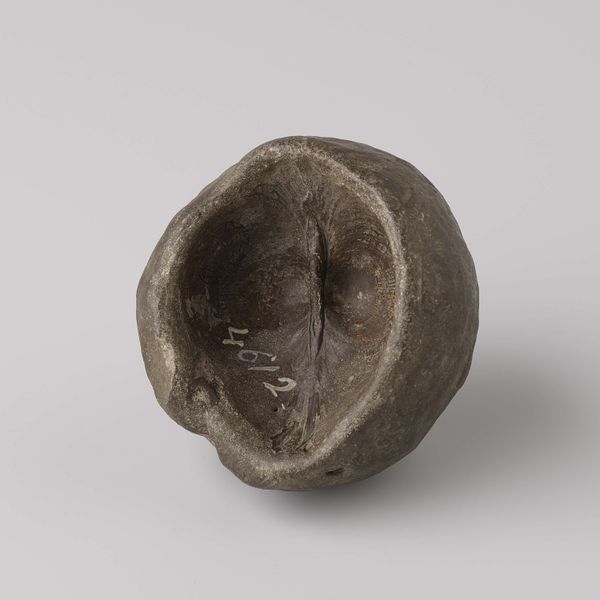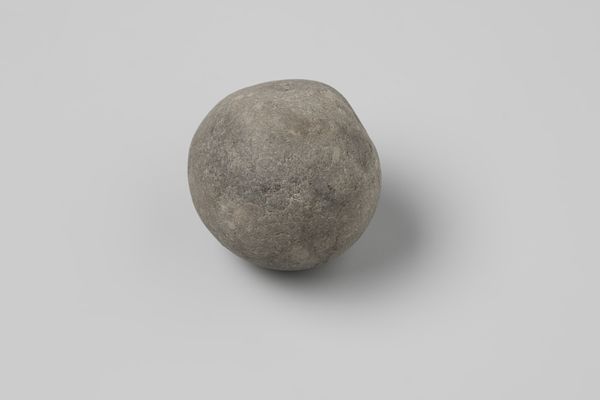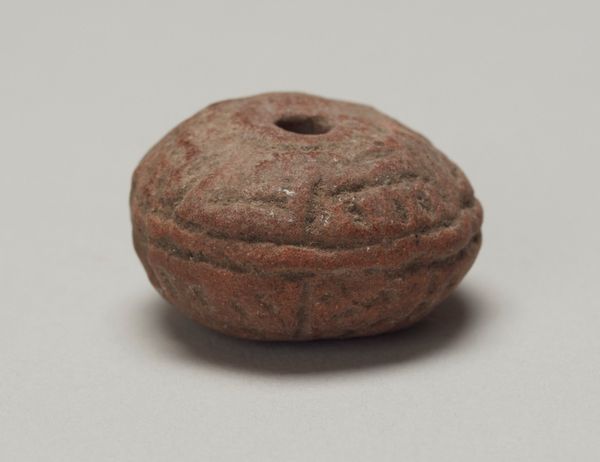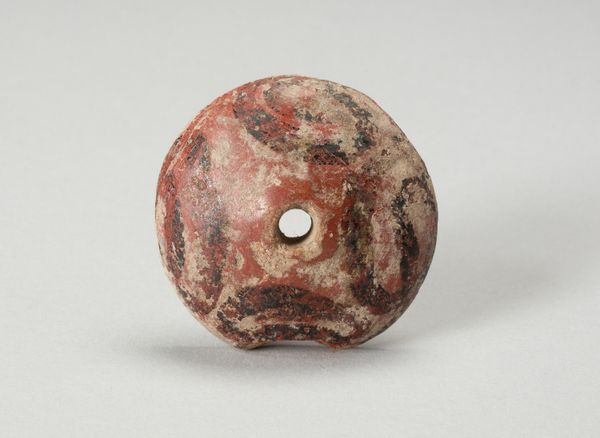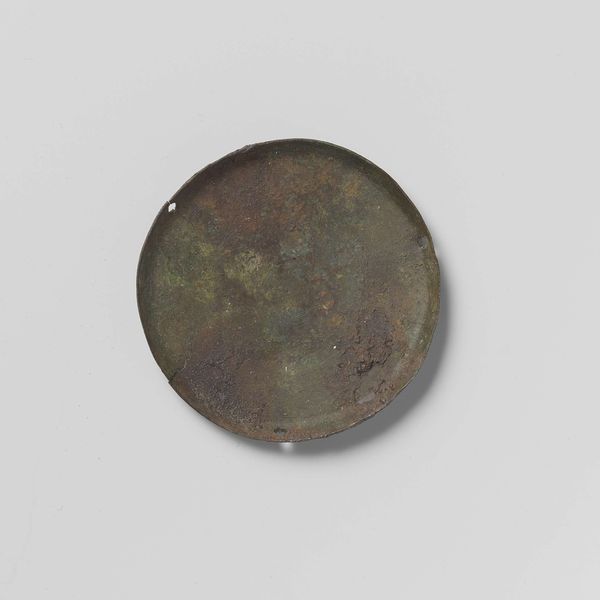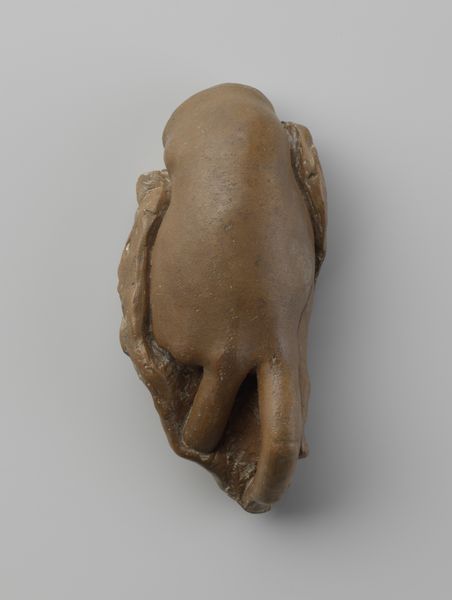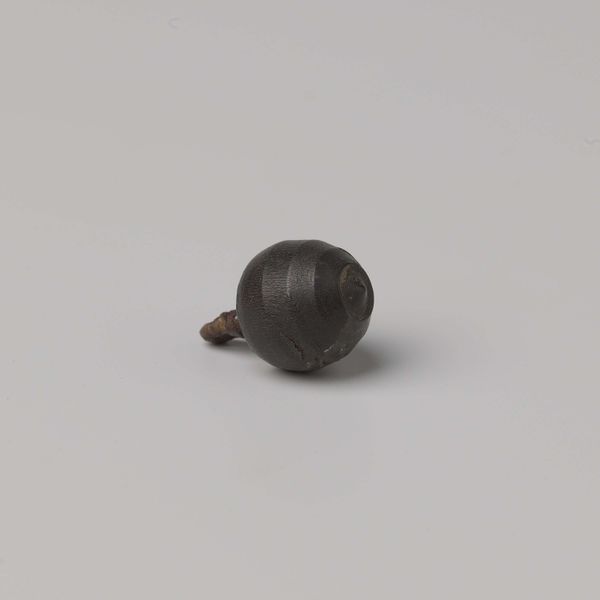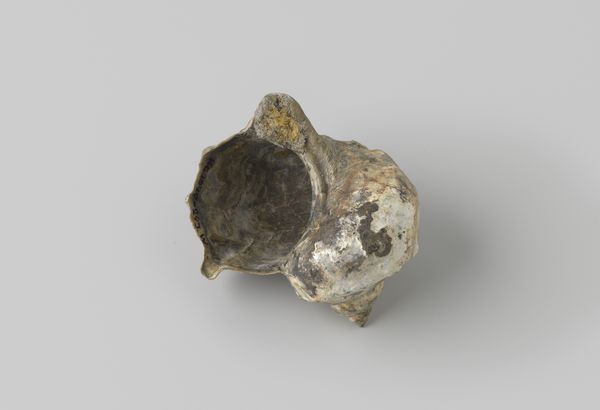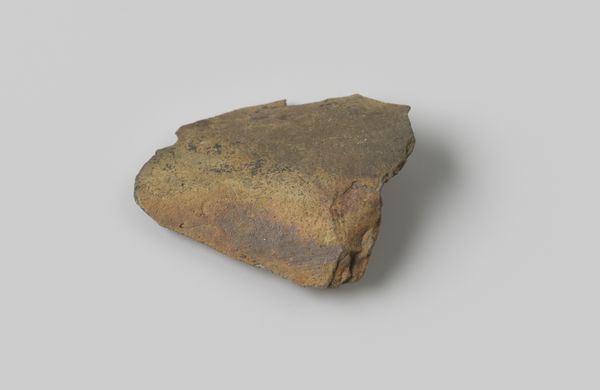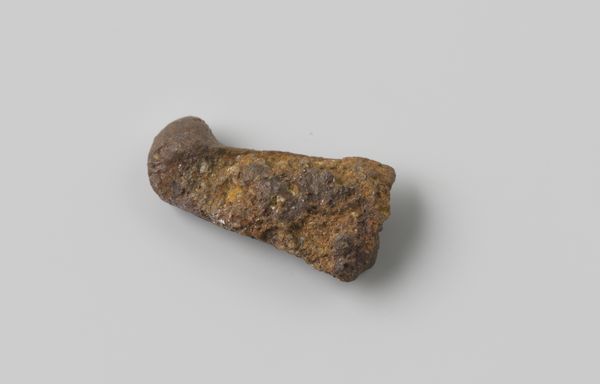
Fragment femurkop van schaap of geit uit het wrak van de Oost-Indiëvaarder Hollandia before 1748
0:00
0:00
nietvantoepassing
Rijksmuseum
ceramic, earthenware
#
ceramic
#
earthenware
#
stoneware
#
ceramic
#
round circular shape
Dimensions: height 1.4 cm, diameter 2.8 cm
Copyright: Rijks Museum: Open Domain
This is a fragment of a femur head, likely from a sheep or goat. Recovered from the wreck of the Dutch East Indiaman Hollandia, its anonymous creation is tied to maritime trade. Consider how this seemingly humble object embodies a vast system. The bone, once part of a living creature, speaks to the provisions needed for long voyages. Think of the labor involved in raising livestock, slaughtering, and preserving meat for months at sea. The ship itself, a marvel of engineering, was built with the toil of countless craftsmen. This fragment, a humble piece, is an artifact that testifies to a huge amount of social activity and labor. The wear and discoloration further narrate its journey through time, submerged in the ocean, now a relic in a museum. By recognizing the layers of production embedded in this object, we gain a richer understanding of history, and it challenges traditional notions of art and value.
Comments
No comments
Be the first to comment and join the conversation on the ultimate creative platform.
